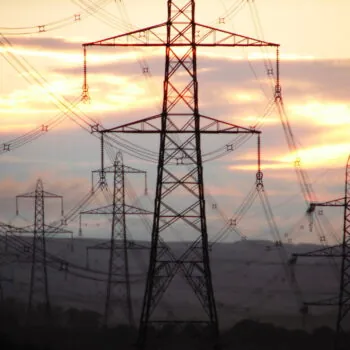As the European Commission struggles to finalise their proposal for the level of European greenhouse gas (GHG) targets for 2030, the scientific basis underpinning their decisions continues to shift. New research re-enforces the view that the range of targets discussed by the Commission will be inadequate to limit climate risk to manageable levels, and therefore will fail to protect the fundamental interests of European citizens and businesses.
The results of a series of new research studies paint a picture that suggests climate risks are higher than previously estimated, that much of Europe is more vulnerable to these impacts, and that agreeing stronger global emission reductions over the next 10-15 years is the only way to keep below the critical climate system threshold of 2C.
It is therefore even more important to agree an ambitious global climate change agreement in Paris 2015. If Europe wants others to act boldly in 2015 it must be prepared to show it is serious when setting its own 2030 targets.
A maximum EU offer of 40% GHG cuts in 2030 – as currently proposed by the European Commission – will not be taken seriously by the rest of the world.
The 2030 debate has shown that despite some new high level speeches on climate change, European politicians only poorly understand the impact of different 2030 goals on national and European interests. This is the core failure of the European climate policy debate, alongside the disinformation spread by incumbent fossil fuel interests. What should be a vibrant political discussion about ends and means has descended into an abstract argument over percentage reductions and numbers of policy targets. This technocratic battle alienates the European public and obscures the real-world consequences of different policy choices.
While climate change policy is complex, its end goal is straightforward. To keep climate risk below dangerous levels, global GHG concentrations in the atmosphere must be stabilised. To do this the world must to move to a net-zero carbon energy system early in the second half of the century. Richer countries – like those in the EU – will need to be net zero GHG by 2050. Emerging economies like China and Brazil must be net zero by 2070 at the latest. This is not fair, but it is necessary. It requires emerging economies to do proportionately much more to solve climate change than the US, EU or Japan.
But 2050 is long way off and deciding what needs to happen in the next 10-15 years is more complicated. Managing climate change risk requires balancing complex, uncertain and constantly shifting factors. What are the probabilities of different levels of climate risk at different GHG concentration levels? How fast will global emissions rise in the future? How much effort will other countries agree to make? Is it more cost-effective speed to move early to a zero-carbon energy system or wait for technology to improve? If climate risks are higher than expected how feasible is it to have a “crash programme” to rapidly cut emissions in the 2030’s? Should we cut more now in anticipation that risks could be at the higher end of current estimates and emergency measures may be needed in the future?
All these factors need to be weighed, and value judgments made, in order to effectively “risk manage” the transition to a net zero emission economy and deliver a stable climate. But climate change policy is not unique. Similar judgements over critical risks are made on issues such as pension reform, public health and non-proliferation. But unlike EU climate change policy, in these areas we would never expect to retrieve the right risk management strategy from inside a computer model. Effective management of societal risk requires open and informed political debate, and must be updated to reflect the latest evidence. The UK Climate Act and work of the Committee on Climate Change is a good example of how this can be done[1], and it is no coincidence that the UK has proposed the most ambitious EU 2030 GHG reduction target.
The EU has undertaken a policy process on climate change, but not one which has reflected the evolving evidence base. The EU decided in 2009 that a safe climate pathway was for rich countries to aim for 80-95% GHG emission reductions by 2050. In 2011 the Commission estimated that to reach the weakest end of this range (80% reductions) the EU would need to achieve 40-44% reductions by 2030, compared to a business-as-usual pathway of 32% reductions.
Therefore, current Commission proposals for GHG cuts of at most 40% by 2030 are barely consistent with even the most optimistic 2009 scenarios for delivering a 50% chance of staying below 2C. But our understanding has changed since these scenarios were modelled. In the last months several synthesis studies have raised likely estimates of climate risk, and restricted the options for mitigation reduction paths. These results – and others like them – should have been incorporated into the 2030 debate and resulted in a revision of proposed EU targets.
Commission-funded modelling suggests Southern Europe faces very large temperature increases under business-as-usual global GHG emissions. Spain, France, Italy and the Balkans will see an 80% increase in water shortages due to climate change. As water use is also rising in these regions this represents a high level of potential economic damage[2]. While rainfall increases elsewhere in Europe, this mainly occurs in the remote areas of Norway and Sweden and so provides no practical remedy to drought elsewhere.
A study[3] comparing climate change models with real observations suggests it is highly unlikely that climate risk actually lies at the lower end of the current range of estimates. Models which produced below average increases in warming seem to be overestimating the cooling impact of clouds compared to actual observations. If this result holds, then the average climate risk associated with any global GHG concentration will have to be revised strongly upwards. Emissions cuts for all countries will need to be deeper and faster than previously estimated to keep 50% chance of being below 2C. This means going beyond even 95% cuts for the EU in 2050.
If that study suggests we need to do more to deliver 2C, other modelling[4] suggests there is no alternative to starting to deliver these additional cuts immediately. Using multiple models of the global energy economy, studies show that it is extremely unlikely that a failure to agree strengthened emission reductions this decade could be reversed by “backloading” with extremely fast emission cuts beyond 2030. The “backloading” option would require decades of global GHG reductions at over double the fastest rate seen in the last 40 years; much faster than France’s rapid nuclear build out after the 1970’s oil crisis. Large amounts of high carbon infrastructure would need to be scrapped and a crash programme of clean energy investment undertaken. While not technically impossible, this would be far harder and more expensive than taking action now.
The need to agree additional action now becomes even more important given new analysis of geo-engineering options, which have been promoted as “technology fixes” to control climate risk in the event of a failure to agree to actually limit GHG emissions. Detailed modelling[5] shows that the cheapest option of ejecting huge amounts of sulphates into the upper atmosphere would indeed lower global temperatures. However, it would also disrupt topical rainfall around the world, resulting in massive droughts across Africa and Asia and damaging the livelihoods of billions of people. A palliative response which is actually worse than the disease.
Other research puts severe limits on the contribution from the more benign geo-engineering option of producing “negative emissions” by burning biomass and then capturing and burying the carbon. In a world of growing population, rising food consumption and changing climate many of the scenarios modelled using this approach are simply infeasible or would require unfeasibly huge plantations of fuel crops across the whole of Africa and Latin America[6].
So what does this evolving evidence base mean for Europe? Currently the debate over the 2030 package is disconnected from the scientific and economic realities of climate change. As it seems the risks of climate change are higher than previously estimated in 2009, the EU needs to adjust its climate ambition upwards. The only way possibly persuading emerging economies – such as China, Brazil and South Africa – to increase their ambition is for the EU to show it is taking the science seriously itself. This suggests that the EU should be discussing a minimum 50% domestic cut in GHG emissions, with international trading counted additionally.
There is no point the EU talking the talk on 2C if it is not prepared to walk the walk. The European Commission is failing to provide the science-based proposals needed to protect the interests of European citizens. It is time for the Member States to take over the debate and support the UK proposal for a 50% GHG reduction target by 2030 as the pathway towards an effective global agreement to control climate risk in 2015.
[1] https://www.theccc.org.uk/wp-content/uploads/2013/11/1784-CCC_SI-Report_Book_single_1a.pdf
[2] https://www.hydrol-earth-syst-sci.net/18/85/2014/hess-18-85-2014.pdf
[3] https://www.nature.com/nature/journal/v505/n7481/full/nature12829.html
[4] https://www.sciencedirect.com/science/article/pii/S0040162513002539
[5] https://iopscience.iop.org/1748-9326/9/1/014001/article
[6] https://www.nies.go.jp/ica-rus/workshop/presentation/sessionNE1/Etsushi%20Kato_Ecosystem%20sustainability%20of%202%E2%81%B0C%20scenario%20using%20BECCS.pdf.pdf


